The Chinchorro mummies of northern Chile, the oldest in the world purposefully preserved by humans, have been added to UNESCO‘s World Heritage List.
The mummies, found at the start of the 20th century, are more than 7,000 years old—pre-dating the more famous Egyptian mummies by some 2,000 years.
During the 44th session of the World Heritage Committee, held online from Fuzhou, China, the United Nations Educational, Scientific and Cultural Organization announced Tuesday it had added the ‘settlement and artificial mummification of the Chinchorro culture’ to the prestigious list.
‘UNESCO is validating on an international level, through different experts, that the settlements and artificial mummification of the Chinchorro culture has exceptional value, that it has a global importance,’ Chilean anthropologist Bernardo Arriaza told AFP.
According to a statement on the UNESCO website, three sites associated with Chinchorro mummification have been added: Faldeo Norte del Morro de Arica and Colón 10, both in Arica, and Desembocadura de Camarones, a village about 60 miles south.
Tools made of mineral and plant materials have also been discovered at the sites, as well as simple instruments made of bone and shells ‘that enabled an intensive exploitation of marine resources.’
Analysis of bone chemistry and discarded shell piles suggest 90 percent of the Chinchorro’s diet was seafood.
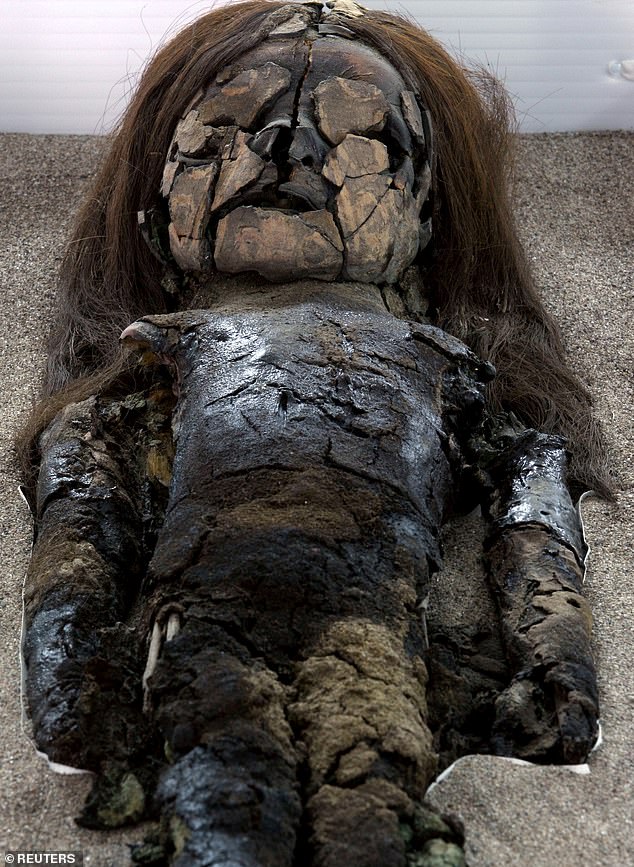
A thick head of black hair was sewn onto the scalp and the corpses were then painted red or black. Babies seemed to receive the most ornate treatments, leading some experts to believe mummification was a means for parents and families to grieve their early deaths
The Chinchorro were fishers and hunter gatherers more than 7,000 years ago in an area where the desert and Pacific Ocean meet in what is today the south of Peru and north of Chile.
One mummy bore a mustache-like dotted line above his upper lip, believed to represent the oldest direct evidence of tattooing in the Western Hemisphere.
The mummification process consisted of removing the organs, intestines and tissue, then ripping the skin off and reassembling the corpse using sticks and animal hair.
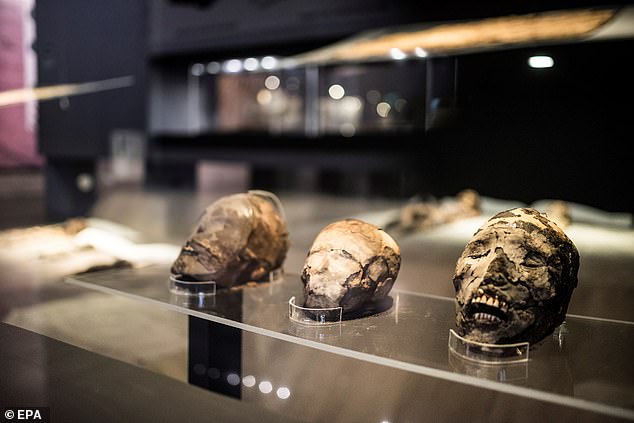
The Chinchorro mummies represent the oldest in the world known to have been purposefully preserved by humans. Corpses were typically painted red or black—using dirt, pigments, manganese and iron oxide
A thick head of black hair was sewn onto the scalp and the corpses were then painted red or black—using dirt, pigments, manganese and iron oxide.
So far, more than 300 Chinchorro mummies have been uncovered, including red, black and bandaged ones.
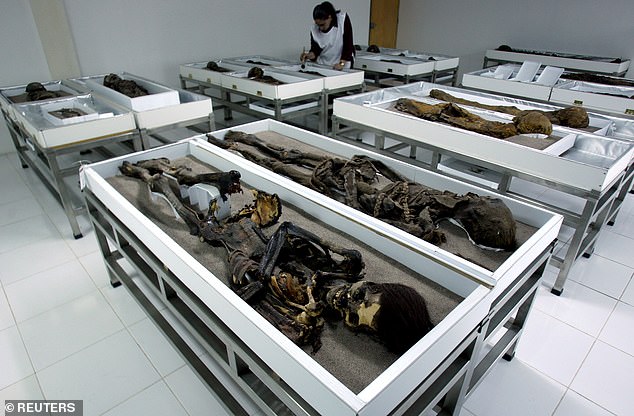
So far, more than 300 Chinchorro mummies have been uncovered, including red, black and bandaged ones
‘These bodies are very finely made by specialists. There’s a subtlety, a creativity by these first populations,’ said Arriaza, director of the Chinchorro Center at Tarapaca University in Arica.
Unlike the Egyptians, who reserved mummification for royals, the Chinchorro ‘systematically dismembered and reassembled bodies of deceased men, women and children of the entire social spectrum,’ according to UNESCO.

Experts have also speculated mummification was a way to prevent corpses from frightening the living, especially as the Chinchorro didn’t bury their dead very deep
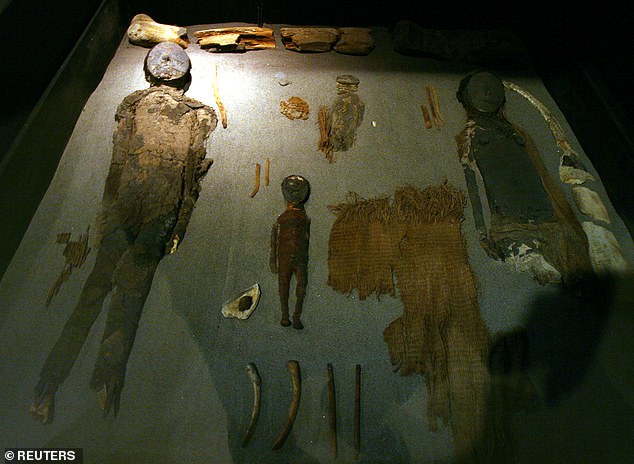
Chinchorro mummies on display in the San Miguel de Azapa Archaeological Museum in Arica
It’s still not entirely clear what purpose mummification served in Chichorro culture or cosmology.
Experts have previously speculated it was a way to prevent corpses from frightening the living, especially as the Chinchorro didn’t bury their dead very deep.
‘Because it’s very dry, corpses do not decompose,’ Chilean Catholic University ecologist Pablo Marquet told The World in 2012. ‘So you stick around.’
But Arriaza has theorized that high levels of arsenic in the water could have led to miscarriages and high infant mortality and mummification was ‘an emotional response from parents faced with these painful losses,’
Children and babies seemed to receive the most elaborate mummification treatments.
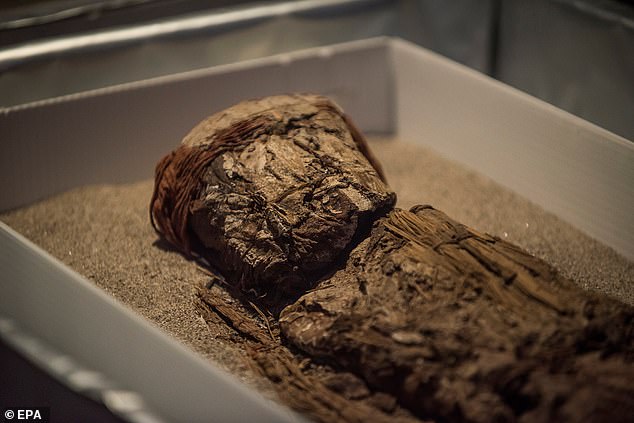
The mummification process consisted of removing the organs, intestines and tissue, then ripping the skin off and reassembling the corpse using sticks and animal hair
‘They painted them, dressed them up and every day this technique became more elaborate,’ Arriaza said.
The World Heritage Committee announced 13 new sites added to the list in all on Tuesday, including the ancient city of Dholavira, India; the resort town of Nice, France; the prehistoric Jomon site in southern Hokkaido, Japan; Sudanese style mosques in northern Côte d’Ivoire; and Speyer, Worms and Mainz in Germany’s Upper Rhine Valley, home to a vibrant Jewish community between the 11th and the 14th centuries.





